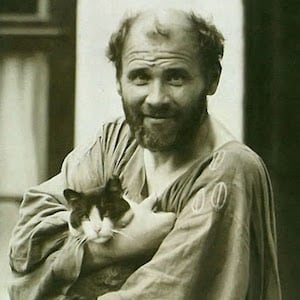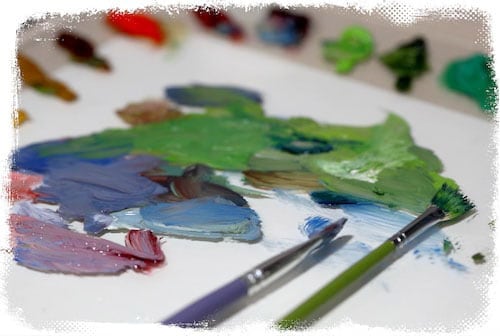
Gustav Klimt
Gustav Klimt
1 to 30 out of 179 items
1 to 30 out of 179 items
Austrian symbolist painter Gustav Klimt (July 14, 1862 – February 6, 1918) was also a leading figure in the Vienna Secession. Many works of art by Klimt, including paintings, murals, drawings, and more, have become iconic. Klimt's paintings are characterized by open sexuality, and the female body was his major topic. Landscapes were among his figurative specialties with allegories and portraits. Klimt was the most affected by Japanese art and its techniques among the painters of the Vienna Secession.
He was a conventionally successful painter of architectural embellishments when he first started. His paintings on the ceiling of the Great Hall at the University of Vienna, which he finished about 1900, were attacked as sexual, and this issue followed him as he developed a more personal style. Since then, he has refused all public assignments, but his "golden phase" paintings, which sometimes use gold leaf, have become immensely popular. Among Klimt's contemporaries, the younger and more talented Egon Schiele looked up to his work significantly for inspiration.
Early Life
Gustav Klimt was the second of seven children, three boys, and four girls, born to his parents in Baumgarten, a suburb of Vienna in the Austrian Empire. Anna Klimt (née Finster), his mother, wanted to be a singer but never had the chance. Ernst Klimt the Elder, his father, was a gold engraver from Bohemia. Their three boys all showed early signs of creative ability. Ernst Klimt and Georg Klimt were Klimt's younger brothers.
From 1876 until 1883, Klimt studied architectural painting at the Vienna Kunstgewerbeschule, a school of applied arts and crafts today known as the University of Applied Arts Vienna, even though he had to do so on a minimal budget. Hans Makart, the leading history painter in Vienna at the time, was a hero of his. The early Klimt may be considered intellectual since he quickly adopted education concepts. Ernst, an engraver like their father, entered the academy the following year (1877). Together with their brother, Franz Matsch, they formed a business they dubbed the "Company of Artists," which by 1880 was receiving several contracts. In addition, they aided their instructor in painting murals for Vienna's Kunsthistorisches Museum. On the Ringstraße, Klimt started his professional career, painting murals and ceilings for significant public buildings. His series of "Allegories and Emblems" was particularly well received.
In his work on the murals at Vienna's Burgtheater, Klimt was awarded the Golden Order of Merit by Austro-Hungarian Emperor Franz Josef I in 1888.
The University of Munich and the University of Vienna made him an honorary member of their faculties. After the deaths of his father and brother Ernst in 1892, Klimt was left with the task of providing for their families. Tragedies also affected his creative outlook, and he was already making strides toward a new aesthetic. Nuda Veritas (naked truth) is a symbol that appears in many of his works, including Ancient Greece and Egypt (1891), Pallas Athene (1898), and Nuda Veritas (1900), which are all indicative of his late 19th-century style (1899). Historians believe that Klimt, with the nude veritas, was criticizing the Habsburgs' policies and Austrian society at the time for its indifference to the country's political and social concerns. Emilie Louise Flöge, an Austrian fashion designer and a sibling of Klimt's sister-in-law, became his partner in the early 1890s and remained so until his death. Five years after Klimt's 1902 full-length portrait of her, he produced The Kiss (1907-08), which is often seen as a depiction of them as lovers. She made and modeled several of his original outfits.
Klimt had at least fourteen children during this time.
Years of Vienna Secession
In 1897, Klimt joined the Wiener Sezession (Vienna Secession), and he later served as its president and editor of its journal, Ver Sacrum ("Sacred Spring"). Up until 1908, he was loyal to the Secession. In addition to hosting exhibits for unusual young artists and bringing the most significant international artists to Vienna, the organization also published a journal to promote its members' work. There was no manifesto or stated goal to promote any specific style within the organization; members included Naturalists, Realists, and Symbolists. The government helped their cause by leasing public property to build an exhibition hall. Klimt's daring 1898 depiction of Pallas Athena, the Greek goddess of fair reasons, knowledge, and the arts, served as the group's logo.
Klimt initially painted the ceiling of the Great Hall at the University of Vienna in 1894. His three works, Philosophy, Medicine, and Jurisprudence, were condemned for their radical subjects and material and were termed "pornographic." He could not finish them until the turn of the century. Some found Klimt's use of sexual symbolism and allegory troubling because of the new language he created. Political, artistic, and religious groups all spoke out in protest. The paintings were thus not hung on the Great Hall's ceiling. The artist decided that this was their last commission to take on in a public capacity. In May of 1945, when the Germans were fleeing, they set fire to Schloss Immendorf, destroying all three paintings.
His attempt to further "shake up" the system was crystallized in his Nuda Veritas (1899). Above the red-headed woman's stark nude body, a quote from Friedrich Schiller is written in stylized lettering: "It's better to impress a select audience with your actions and creations than to fail to impress anybody at all. Please, everyone, this is a poor goal."
To accompany a monumental polychrome sculpture by Max Klinger, Klimt completed the Beethoven Frieze in 1902 for the Fourteenth Vienna Secessionist exhibition. The frieze was explicitly created for the show and was painted on the walls using lightweight materials. The picture was taken care of after the show and wasn't displayed again until 1986 when it was repaired. The artist who painted Beethoven's likeness also painted Gustav Mahler, who oversaw performances at the Vienna Court Opera.
During this time, Klimt's work wasn't limited to commissioned pieces for the public. From the late 1890s forward, he spent his summers with the Flöge family in the same house on the beaches of Attersee, where he painted many of his landscapes. Landscapes were the only subject matter outside of portraiture that Klimt took seriously. The townspeople named him Waldschrat because of his fierce demeanor ("forest demon").
The paintings Klimt created in Attersee are so numerous and impressive that they deserve recognition. The landscapes have the same formal characteristics as the figures, focusing on design and patterning. Many have speculated that Klimt used a telescope to render the deep expanse of his Attersee paintings as a flat, single plane.
The Peak of Triumph & The Golden Era
During Klimt's "Golden Phase," the artist received widespread acclaim and commercial success. Gold leaf was a common feature in many of his works. Though Klimt's Portrait of Adele Bloch-Bauer I (1907) and The Kiss (1907) are the most well-known works from this period, he had already utilized gold in his Pallas Athene (1898) and Judith I (1901). (1907–08).
Klimt did not travel far, but his visits to Venice and Ravenna, both known for their exquisite mosaics, undoubtedly influenced his use of gold and his service of Byzantine themes. Working with other painters in 1904, he created the extravagant Palais Stoclet, the residence of a wealthy Belgian entrepreneur and one of the most significant monuments of the Art Nouveau period. Fulfillment and Expectation, two of Klimt's contributions to the dining room, are among the artist's best decorative works and represent, in Klimt's words, "perhaps the final step of my evolution of decoration."
Klimt painted the life cycle in The Three Ages of Woman in 1905. He painted a picture of Ludwig Wittgenstein's sister Margarete for her wedding. Then, Klimt painted five fur-clad society ladies between 1907 and 1909. Flöge's evident affection for costumery is fully displayed in the many images of him wearing his creations.
Klimt often went without underwear when working or lounging around his house, opting instead to wear sandals and a large robe. His life was uncomplicated and private, focused on art and family rather than extracurricular activities or the Secessionist Movement, from which he and many of his contemporaries later withdrew. He seldom interacted with other creative types and shunned café culture. Klimt may be picky about who he did and did not accept because of his popularity. His painting process might be slow and laborious, and he often had his models sit for hours. He was sexually active but never let anybody find out about it.
In his writings, Klimt seldom elaborated on his goals or creative process. He infrequently maintained a journal but did send Flöge postcards. He is documented in a highly unusual book titled "An imaginary self-portrait with his commentary on it. "I have never drawn a self-portrait," he writes. Rather than focusing on myself, I like to paint other people, especially ladies. I'm not very interesting or unique in any way. I am a painter who constantly works, from dawn till dusk... Anyone interested in learning more about me... should study my photos closely."
Hermann Bahr said of Klimt's art in his 1901 Speech on Klimt, "Just as only a lover can explain to a man what life means to him and develop its deeper meaning; I feel the same about these paintings."
Death
During the international exhibits held in Rome in 1911, his painting "Death and Life" won first place. His mother, Anna, passed away in 1915. Klimt passed away in Vienna on February 6, 1918, after he had a stroke and contracted pneumonia during the global influenza pandemic that year. He was laid to rest in Vienna's Hietzing neighborhood at the Hietzinger Cemetery to honor his memory. Quite a few of his works were abandoned halfway through. In 2012, for the 150th anniversary of Klimt's birth, the Austrian capital, Vienna, hosted several unique exhibits.
Most paintings Gustav Klimt did are about Portrait, People, Nude, Garden, Landscape, Sketch and Study, and other subjects.
Most of the artist's works that can be seen by the public today are now kept in museums like Österreichische Galerie Belvedere - Vienna, Leopold Museum, and others.
Famous Gustav Klimt period artists include Pierre Auguste Renoir (French, 1841 -1919), John Singer Sargent (American, 1856 -1925), Edvard Munch (Norwegian, 1863 -1944), Claude Monet (French, 1840 -1926), Pierre Bonnard (French, 1867 -1947), Henri Lebasque (French, 1865 -1937), Édouard Vuillard (French, 1868 -1940), Mary Vaux Walcott (American, 1860 -1940), Edgar Degas (French, 1834 -1917), Frederick Childe Hassam (American, 1859 -1935), Gustave Loiseau (French, 1865 -1935), Sir John Lavery, R.A. (Irish, 1856 -1941), and others.
Get inspired by the most famous paintings of Gustav Klimt. Pick your favorite, and one of our talented artists will make a copy just like the original, making it a unique gift or piece of art for your home. If you can't find a specific Gustav Klimt, contact us for a price quote.






























